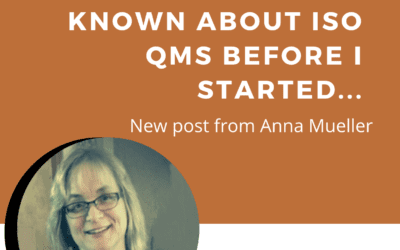In our last blog post, we reported on changes coming to the aerospace quality management standards that we learned about at the American Aerospace Quality Group aerospace auditors workshop held July 21 and 22. In this post we will share what we learned about one of the new requirements.
The new revision of AS9100D is due out on September 20, 2016. Clause 10.2 Nonconformity and corrective action will require us to “evaluate the need for action based on human factors to ensure nonconformities do not recur.”
In addition, clause 7.1.4 of both ISO 9001:2015 and AS9100D require us to consider human and physical factors in the environment for the operation of processes, including social, psychological and physical.
These concepts are not new to quality but for the first time they are explicitly defined as requirements in the quality management system standards. The concept of “error proofing” gained momentum in the 1960s.
Human factors are central to many aspects of a quality management system and link back to W. Edwards Deming’s 14 points for Total Quality Management in his seminal work, Out of the Crisis written in 1986.
We recognize that humans are prone to errors, so how can we design the process and environment to prevent and reduce human errors?
This is especially important in aerospace where it is estimated that over 70% of commercial airplane hull-loss accidents and maintenance errors can be attributed to human factors.
Fortunately the aerospace industry has long been cognizant of the need to address human factors and there are several very good resources available to the public on the internet.
- FAA ATM Handbook Addendum Human Factors
- SAE Supply Chain Management Handbook update on Human Factors added in 2014
Human factors involves gathering information about human abilities, limitations, and other characteristics and applying it to tools, machines, systems, tasks, jobs, and environments to produce safe, comfortable and effective human use.
For example, when investigating non conformances, we need to recognize that people performing tasks are affected by a number of issues.
Twelve human factors have been identified as the most common that lead to failures:
- Fatigue
- Lack of concentration
- Complacency
- Lack of knowledge
- Distraction
- Lack of teamwork
- Lack of resources
- Pressure
- Lack of assertiveness
- Stress
- Lack of awareness
- Negative norms
The resources cited contain in-depth talking points on these twelve factors and ways that they can be mitigated. Much of it is cultural. We need to promote and embrace team excellence, with additional safety nets in error prevention. We should understand how the actions of one will impact others and establish and promote a culture of quality and prevention of errors, without fear or criticism. In aerospace parlance: “anyone can stop the launch!”
By objectively considering human factors, we can foster a no-blame culture so that all employees feel comfortable with reporting an issue. We need to ensure competence to perform any task assigned so it can be done correctly, safely and effectively.
Communication and the right attitude are essential to ensure a safe interface between employees and all other environmental elements such as other people, equipment, facilities, procedures and data.
In our next guest post we will look at the new AS9100 requirements on counterfeit products.
Presentations from the workshop are available now on the AAQG website: http://www.sae.org/aaqg/audit_information/workshops.htm
___________________________________________________________________________
About the authors: Tristan Buser-Molatore and Marcia Buser are preferred providers for OMEP specializing in implementing and auditing quality management systems for ISO 9001, AS9100 and ISO 13485.




